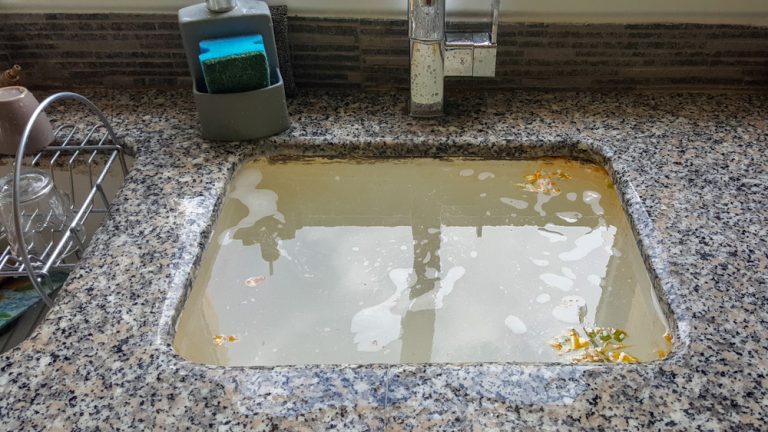In the hustle and bustle of maintaining a home, some things can easily be overlooked—like your residential plumbing. Yet, ensuring your septic system works efficiently and preventing backflow is crucial. Not only does it safeguard your property, but it also protects your family’s health. This post will guide you through understanding backflow, preventing it, and maintaining a healthy septic system.
The Importance of Backflow Prevention and Septic System Health
Why should homeowners care about backflow and septic system health? Simply put, neglecting these areas can lead to severe problems. From water contamination to costly repairs, the implications are far-reaching. Backflow can cause harmful bacteria and chemicals to enter your water supply, posing serious health risks to your family. A failing septic system can lead to unpleasant odors, slow drains, and even sewage backups that can damage your property. By understanding the basics and adopting preventative measures—such as regular inspections, timely maintenance, and proper waste disposal—you can keep your home’s plumbing system in top shape and avoid these potential issues. Investing a little time and effort now can save you from significant headaches and expenses down the road.
Understanding Septic System Backflow and Its Importance
What is Backflow?
Backflow is the reverse flow of water or other substances into the clean water supply. Imagine turning on your tap expecting fresh water, only to be met with contaminants. This typically occurs when there’s a sudden change in water pressure, causing water to flow backward through the pipes.
Why Preventing Backflow is Crucial
Preventing backflow is essential to ensure your drinking water remains safe and clean. Contaminants from sewage, chemicals, or stagnant water can make their way into your water supply through backflow, posing significant health risks. For homeowners, this means protecting your family from potential hazards and maintaining the integrity of your plumbing system.
Common Causes of Backflow and How to Prevent Them
Typical Scenarios Leading to Backflow
Several common scenarios can lead to backflow:
- Changes in water pressure due to nearby construction or fire hydrant use.
- Faulty plumbing systems with cross-connections.
- Sudden drops in the municipal water supply.
Tips to Prevent Backflow Incidents
To prevent backflow, regularly inspect your plumbing system for any signs of wear or damage, such as leaks, corrosion, or cracks in pipes. Installing backflow preventers in critical areas of your plumbing system can help protect your water supply from contamination. Additionally, ensure that any hose bibs have vacuum breakers to prevent siphoning, which can draw contaminated water back into the clean water system. Regular maintenance and timely repairs are essential to keep your plumbing system functioning properly and to safeguard your household’s water quality.
Regular Maintenance Practices
Regular maintenance is key to avoiding backflow issues in your plumbing system. Schedule annual inspections with a professional plumber to thoroughly check your system for any signs of wear or potential failures. This proactive approach can identify potential problems before they escalate, saving you from costly repairs and potential water damage. Additionally, regular check-ups ensure that your home’s plumbing remains in optimal condition, providing peace of mind and maintaining the overall health and efficiency of your water system.
How to Protect Your Home from Backflow
Explanation of Backflow Preventers
Backflow preventers are devices installed in your plumbing system to stop contaminated water from flowing backward into the clean water supply. These devices are essential in maintaining water quality and protecting public health. They work by allowing water to flow in only one direction, thereby preventing any reverse flow that could introduce harmful contaminants into drinking water. Backflow preventers are especially crucial in areas where the water supply is at risk of contamination from irrigation systems, industrial processes, or other sources. Regular maintenance and inspection of these devices are necessary to ensure they function properly and continue to safeguard the water supply.
Types of Backflow Preventers Suitable for Residential Use
Several types of backflow preventers are suitable for residential use:
- Atmospheric Vacuum Breakers (AVB): Installed on outdoor faucets to prevent siphoning of contaminated water back into the clean water supply. They are simple and effective devices that utilize atmospheric pressure.
- Pressure Vacuum Breakers (PVB): Used on irrigation systems and outdoor spigots to prevent backflow. They are equipped with a valve and a spring-loaded check valve, providing reliable protection against contamination.
- Double Check Valve Assemblies (DCVA): Installed in the main water line, offering robust protection against backflow. These devices have two check valves and are commonly used in commercial plumbing and industrial applications to ensure water safety.
Steps to Install and Maintain Backflow Preventers
Installing a backflow preventer involves positioning the device in line with the water supply and securing it with clamps. While it’s possible to do this yourself, hiring a professional ensures proper installation. Maintenance involves regular checks for leaks and testing the device to ensure it’s functioning correctly.
Signs That Your Backflow Preventer Needs Maintenance or Replacement
Look out for these signs indicating your backflow preventer needs attention:
- Water pressure changes: Noticeable fluctuations or drops in water pressure within your home or business.
- Unusual noises from the plumbing system: Sounds such as banging, gurgling, or hissing that are out of the ordinary.
- Visible leaks around the backflow preventer: The presence of water or damp areas surrounding the backflow prevention device.
If you notice any of these issues, it’s time to call a professional for inspection.
Do’s and Don’ts for a Healthy Septic System
Key Practices to Maintain a Healthy Septic System
Maintaining a healthy septic system involves several critical practices:
- Schedule regular pumping every 3-5 years.
- Conserve water to reduce the load on the septic system.
- Use bacteria-friendly products to support the natural breakdown of waste.
Do’s for Septic System Maintenance
- Regular Pumping: Have your septic tank pumped by a professional every few years to prevent buildup.
- Water Conservation: Fix leaky faucets and install low-flow fixtures to minimize water usage.
- Bacteria-Friendly Products: Use septic-safe cleaning products that don’t harm the beneficial bacteria in your tank.
Don’ts for Septic System Maintenance
- Avoid Harsh Chemicals: Don’t pour bleach or other harsh chemicals down the drain as they can kill essential bacteria.
- Don’t Flush Non-Biodegradable Items: Avoid flushing wipes, feminine hygiene products, or any non-biodegradable items as they can clog the system.
- Never Dispose of Grease in Your Drains: Grease can solidify and clog your pipes, leading to blockages and potential septic system failures. When grease accumulates, it restricts the flow of wastewater and can cause backups, requiring costly repairs and maintenance. Instead, dispose of grease in a dedicated container and throw it away with your household trash.
Maintaining a healthy septic system and preventing backflow is essential for every homeowner. By understanding the causes and adopting preventative measures, you can protect your home’s plumbing system and ensure a safe water supply. Remember, regular maintenance and proper practices go a long way in keeping your home’s plumbing efficient and trouble-free.
If you need professional assistance or inspections, don’t hesitate to contact Reliable Plumbing. Your home’s health is our priority.

